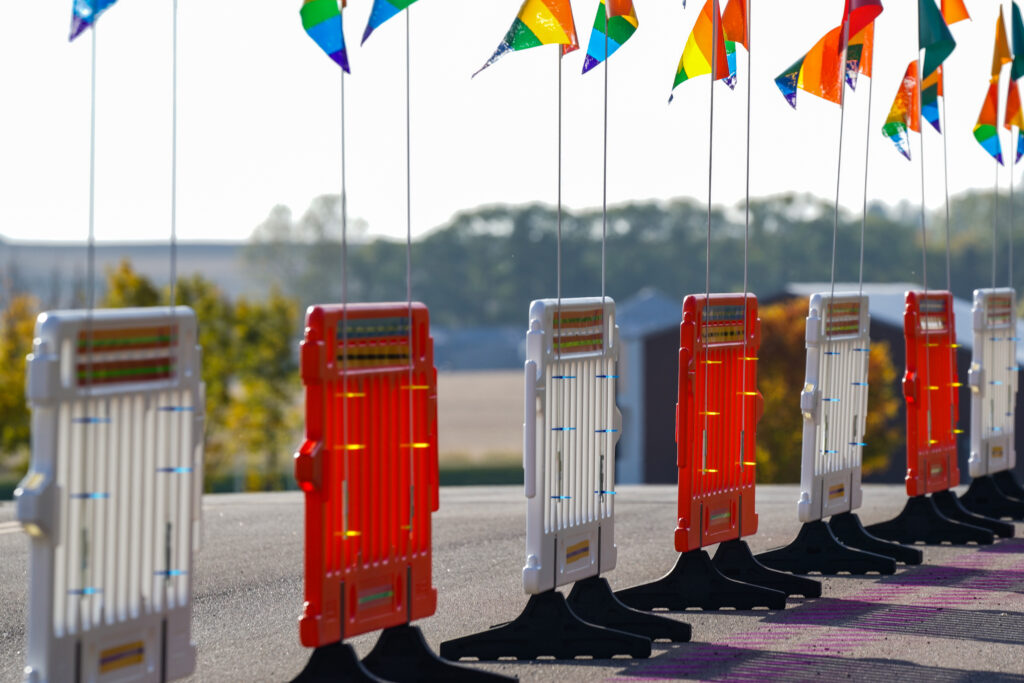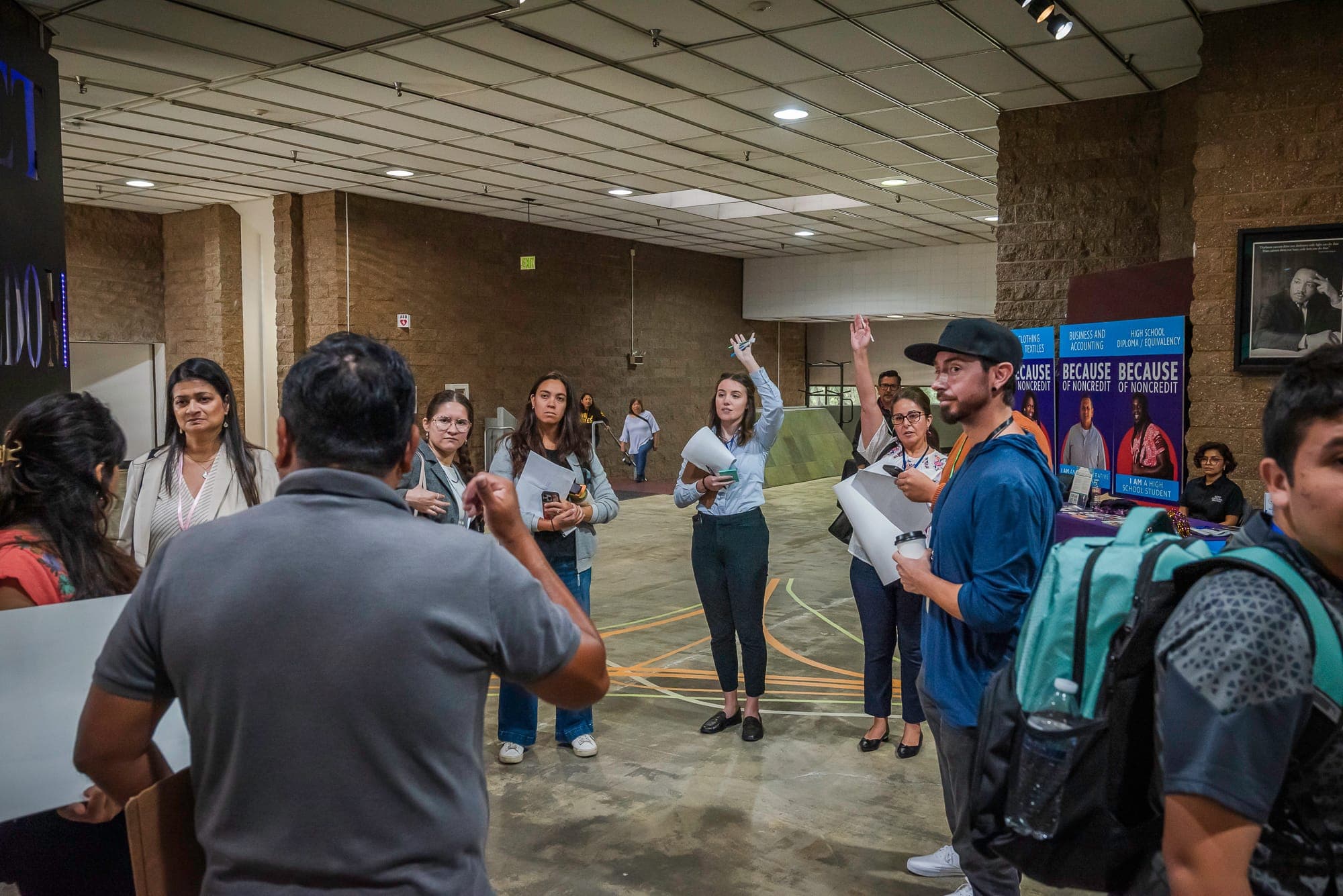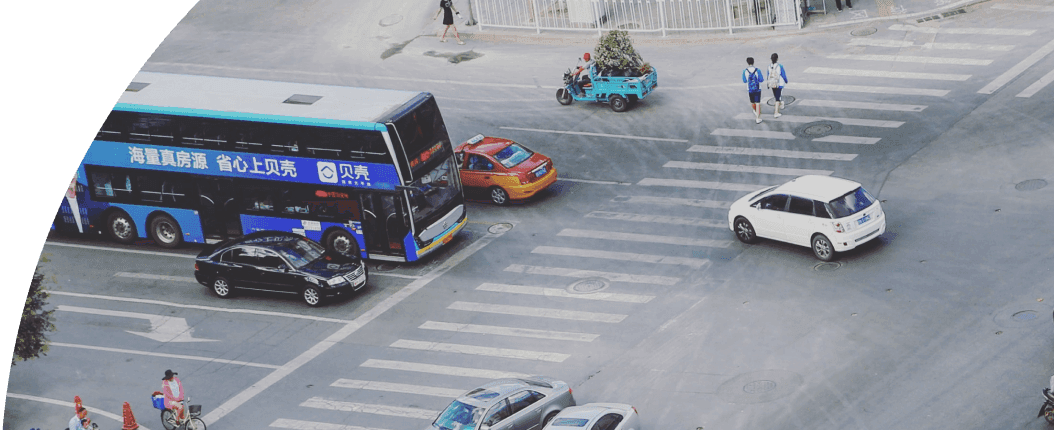
News
By Mae Hanzlik, November 20, 2020

Earlier this week, in partnership with Forecast Public Art, Smart Growth America held a webinar featuring the artists and transportation agencies who worked together as part of the Arts & Transportation Rapid Response initiative to address COVID-related transportation challenges.
After Ben Stone, director of arts & culture at Smart Growth America, and Jen Krava, Forecast Public Art’s Director of Programming + New Initiatives, provided an overview of the initiative, we heard a short project overview from each of the five stellar projects:
- Minnesota artist Naomi RaMona Schliesman and Wayne Hurley, Director of Planning for the West Central Initiative (WCI), shared how they worked together to come up with creative, safe ways to engage the community during COVID-19 and better inform their Safe Routes to School planning. Read more about the WCI project.
- Oakland artist Jonathan Brumfield, joined by Noel Pond-Danchik, a transportation planner at the Oakland Department of Transportation, shared how they worked together to pilot a solution for more aesthetically pleasing, sturdy Oakland Slow Streets barricades that better reflect East Oakland culture and still support safe distancing while traveling and exercising during the pandemic. Read more about the Oakland project.
- Mark Salinas, who worked with artist Ashley Hairston Doughty and the Regional Transportation Commission of Southern Nevada (RTC), shared how their team worked to design signage that would effectively educate the public about social distancing and safe transit riding practices at RTC's main transit hub in Las Vegas. Read more about the RTC project.
- Jen Krava, on behalf of designer Ndubisi Okoye and The City of Detroit, shared how they worked together to help bridge the first- and last-mile gaps between bus stops and the city’s recreation centers that are providing crucial resources during COVID-19. Read more about the Detroit project.
- Bay area Artist Tosha Stimage shared how she worked with Bay Area Rapid Transit to pilot an approach to normalize the culture of wearing a mask on transit and deconstruct the racism worsened by COVID-19. Read more about BART project.
You can find the webinar slides here and the recording below.
Questions?
We had a number of questions asked during the Q&A section of the webinar that we weren’t able to get to at the end. We followed up with the presenters to discuss answers to the questions we missed.
Q1 | Have any of you had your proposed public art project rejected because it was too controversial?
Mark Salinas, Public Art Consultant: Proposals conceived with community stakeholders will have a better chance of not only being accepted, but of “fitting” in the public space regardless of nature. Typically there are several drafts and steps to take place before a final proposal is accepted.
Wayne Hurley, Director of Planning, West Central Initiative: Nothing that was rejected, but we did run into a few minor issues in Henning. First was that school officials were too busy to work with us on the project given the short turn-around, so while we had originally planned to include school property in the project, we ended up stopping just short of their property. The other issue was that we could only work in limited areas within MnDOT’s right-of-way in the downtown area, where we had planned a slightly more robust installation. Neither of those issues was because of any controversy, however.
Ben Stone, Director of Arts & Culture, Smart Growth America: I don’t believe any of the participating artists had to sacrifice their vision. Rather, they each created work that was grounded in their own experiences and in the experiences shared by community members and system users they connected with.
Q2 | Have any of you received complaints about your proposed public art project after installation?
Mark: Yes, this is typical even for enormous public sculptures. However I have received many compliments as well and I share this with those people.
Wayne: None that I’m aware of. We did receive a lot of positive comments, however!
Ben: We’ve only heard positive feedback so far.
Q3 | What are your experiences with vandalism, if any?
Mark: Vandalism, weatherization, and theft are all risks of public art and there should be steps in place to address these issues in the early stages of development.
Wayne: None that I’m aware of for our project.
Ben: None that I’m aware of.
Questions for West Central Initiative
Q4| In terms of kids making markings on paths and trails, did you discuss safety while making marks? What rules/tools did you use to help kids make safe paths and markings?
Naomi RaMona Schliesman, Artist: There were no rules set-up for the kids to make marks on the paths or trails. They created their own marks with chalks, and to me it shows how they have embraced the project and have wanted to be a part of the project by making their own footprints by tracings of their own hands. The footprints are stenciled to be socially distant from one-another, so that when the kids are walking on the paths there is a safe distance between them.
Wayne: As a follow-up to Naomi’s comments, we did have our team all wear reflective safety vests while we were doing the installations in Ashby and Henning. Since we were working alongside a county highway and in a public alley with a fair amount of vehicle traffic, we wanted to make sure everyone was visible.
Q5 | Regarding the artwork on the pavements for Safe Routes to School, what kind of paint was used? How long will it last before reapplying? Does the department of transportation fund the project?
Naomi: We used Montana Spray chalk on the street stencils to make the footprints and walking paths. The spray chalk is temporary and will last for awhile but with weather, rain and snow it will fade faster. As the children walk on the paths this will also make the prints fade. If you would want the footprints to be permanent, you can use spray paint or street paint. No, DOT did not fund our project. I, the artist Naomi, had a budget (funded by Smart Growth America) to purchase all materials. DOT already had a study set-up in Henning they were using to encourage safe crossing for pedestrians for crosswalks. MnDOT invited us to collaborate with them on their existing project to help promote their project.
Wayne: Naomi covered this answer really well. I’ll just add that we are already talking about another project with MnDOT in a different community in our region. So while they’re not providing any funding, we’re glad to have them as a valuable partner in the installations!
Questions for Oakland
Q6 | How does the slow streets movement in Oakland work with Legal and the Manual of Uniform Traffic Control Devices? How does Oakland think about liability if a crash occurs.
Noel Pond-Danchik, Transportation Planner, Oakland Department of Transportation: The City of Oakland closed streets to through traffic for the Slow Streets Program as part of local governments’ emergency powers in responding to the Covid-19 pandemic. The street closures have used traffic control devices (i.e., barricades, cones, delineators, signs) that are standard to the Manual on Uniform Traffic Control Devices (MUTCD). Other treatments—like the planter boxes and branding signs—are not used or intended as traffic control devices. We think about liability by designing for safety, using traffic control devices appropriately, and exercising engineering judgment.
Q7 | In working with the City of Oakland, did you have to obtain permits for the planter boxes for the Slow Streets? What support and resources did the City of Oakland provide your project?
Noel: The planter boxes did not require permits because the planter boxes are the property of the City of Oakland. The city does not need a permit from itself to use its public right-of-way. In contrast, a private entity seeking to place something in the public right-of-way would require a permit—like an encroachment permit for an ongoing use or an obstruction permit for a temporary use. In terms of support, the City of Oakland cleared a path for Jonathan’s artwork to move forward. We provided parameters for where the artwork could be located in the street and for its maximum possible dimensions to allow for the necessary visibility. With agreement on these parameters, Jonathan could focus on the artwork while city staff kept track of the city process.
Questions for Smart Growth America
Q8 | I have recently been appointed to a transportation commission. Where should I start if I want to bring these wonderful, community-building ideas to my city?
Ben: Get in touch with us and we can provide some advice! And your local arts council (or equivalent public arts agency or arts nonprofit) is a great resource for learning about working with artists on these types of creative projects.
Interested in learning more about these projects?
Read the full version of the report that covers the five artist-led projects that sought to address COVID-19 transportation challenges as part of the Arts & Transportation Rapid Response initiative, with a full introduction and biographies of the artists. Read the report here.
Related News

© 2025 Smart Growth America. All rights reserved
Site By3Lane Marketing












